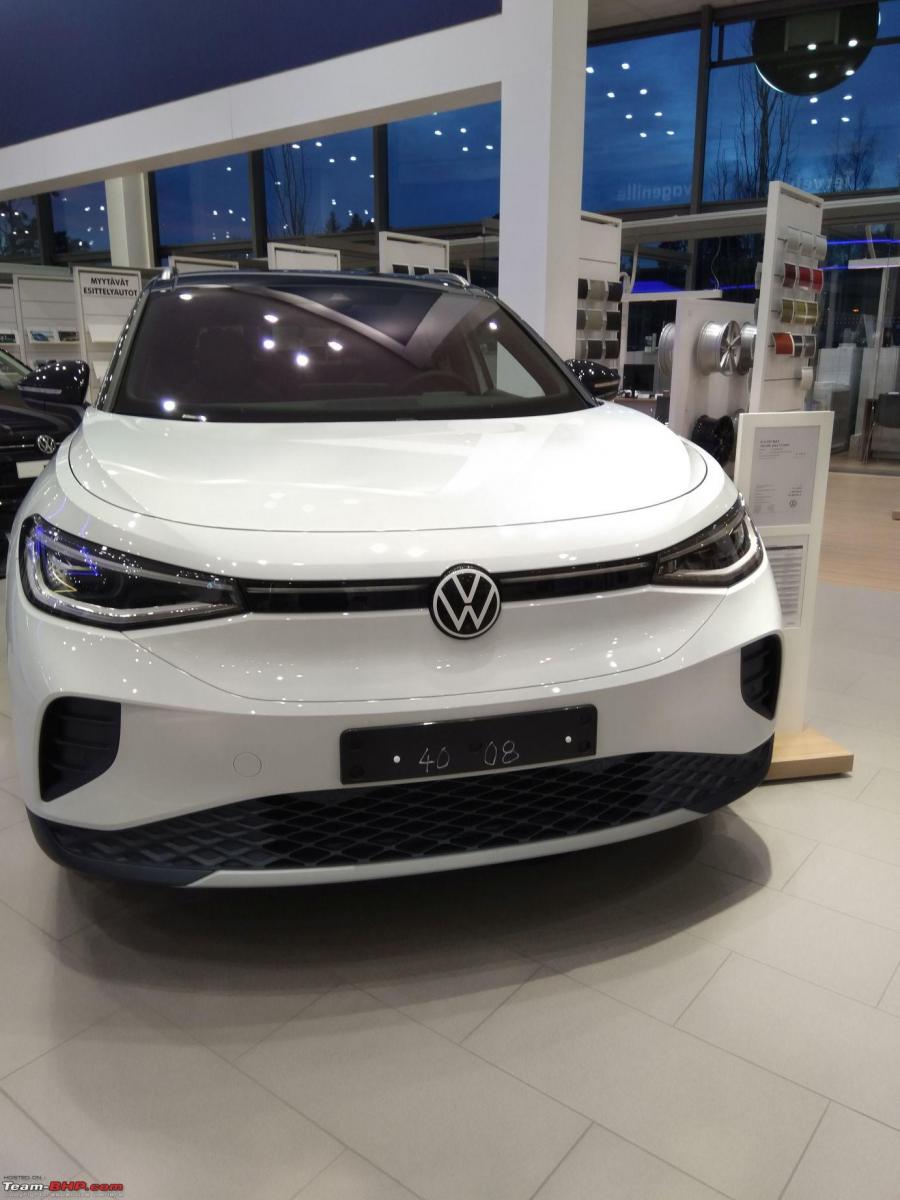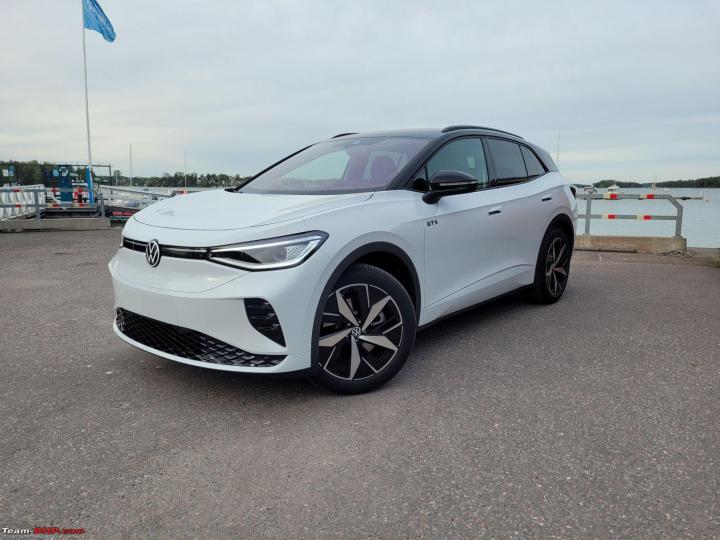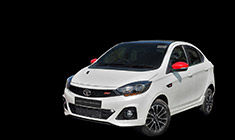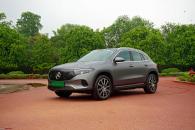News
Upgraded from the Skoda Karoq to the VW ID.4 EV: A detailed review
I wanted a PHEV crossover/SUV that matched Karoq in size/space and features (safety and others).
BHPian StarrySky recently shared this with other enthusiasts.
Our VW ID.4 GTX Business was delivered in March 2023. The car is on a 3-year lease.
Background:
The 3-year lease on our previous car, the Skoda Karoq, was ending in July 2021. 2021? Yes, be warned, this one's going to be a long story. And this story doesn't begin in 2021. It begins much earlier.
If you are not in the mood for a long story, you can skip ahead using these links:
- Exterior
- Interior(Front)
- Interior(Rear) and Boot
- Infotainment and Driver's Console
- Features
- Living with the GTX, Likes and Dislikes
Now, back to the story. In late 2018, a few months after I got the Karoq, my company's car leasing policy was updated to favour BEV/PHEV over ICE cars. My usage pattern (pre-Covid) perfectly matched the PHEV use case, with daily running of about 30-35km. When I chose the Karoq, most available PHEVs were expensive cars. I didn't consider any of them due to budget constraints. I hoped that the shift in policy would also show its effect on the leasing costs of BEV/PHEV vs ICE. I was quite sure that my next car will be a PHEV and kept an eye on the leasing rates as more PHEVs were getting launched. Thus, long before the lease was set to expire, I had a list of options to choose from
Requirements:
In one sentence - I wanted a PHEV crossover/SUV that matched Karoq in size/space and features (safety and others). This wasn't such a simple requirement, the Karoq was quite feature rich. But among the features, I was ready to sacrifice some creature comforts if needed.
For me, Karoq had set a high benchmark. I didn't really need to replace it after the initial 3-year lease as I could extend the lease for up to another 2 years. However, getting a new car is always an exciting prospect. With the lease, I pay only the leasing cost and fuel costs. So in terms of costs per month, I calculated that a PHEV would approximately cost the same as the Karoq, as the potential higher leasing cost for a PHEV will be largely, if not completely, offset by savings on diesel costs.
The First Candidate List:
In the summer of 2020, a friend was looking for a new lease car and started test drives. This triggered me to list down all my options as well. My list was:
Ford Kuga PHEV Titanium-X or ST-Line-X:
- Closely matched my one-sentence requirement
- Generally positive reviews
- Other than the PHEV part, offered nothing special over the Karoq. I got a chance to ride in it when my friend took a test drive. I had nothing to complain about, but I wasn't particularly wowed either.
BMW X1 xDrive 25e:
- AWD
- Brand, of course!
- 3-cylinder engine (but hey, even the i8 has a 3-cylinder engine)
- Matching Karoq's feature list on the X1 meant really stretching my budget. So it was a question of which creature comforts I was prepared to leave out
Mercedes B250e PHEV:
- More than 60km all-electric range (claimed)
- Loved the interiors
- Cheaper to lease among the premium options (including my preferred features)
- A bit cramped
- Not a crossover/SUV (but it still had a high seating position)
Volvo XC40 Recharge PHEV:
- More creature comforts standard than X1
- Good-looking inside and out
- 3-cylinder engine
- All electric-range and FE on petrol were disappointing as per reviews
- X1 and B250e seemed better value propositions. Just as premium as the Volvo, and offered other strengths as well
I paid a visit to the Mercedes and BMW showrooms. In terms of space, the X1 won comfortably. In terms of interiors, the B250e won.
Then Bjorn Nyland released this video
I hadn't given much thought to the charging part till then. Given the relatively small batteries in a PHEV, I had assumed that on a road trip I would be able to fast charge the battery during breaks and get that additional all-electric range. This turned out to be quite untrue. I started paying attention to the charging speeds. The Mercedes B250e had no competition here with 7.2kW AC and 22kW DC charging support. Others supported only 3.6kW AC charging.
The second issue was charging at home. I had again assumed that I would be able to replenish a good part of the all-electric range quite fast each time I was parked. My parking spot already had an electrical connection to connect the engine heater. Upon checking with my parking maintenance company I was informed that it wasn't possible to charge EVs, but I could charge a PHEV. They also said the parking may be renovated in the near future and electrical points upgraded. But till such time, the maximum current was restricted to only 8A, which meant just 1.8kW for charging. My enthusiasm dampened quite a bit.
This was in mid-August 2020. With a few months still to go before I had to order a new car, I decided to check my options at the end of the year. Another reason was the road trip we had towards the end of July 2020. The Karoq was very comfortable during the 4000+ km trip for me as the sole driver and also for the family. The family didn't think we should let go of the Karoq at the end of the lease. I partly agreed with them, but partly still wanted a new car.
Re-evaluating options:
In January 2021, the process to order a new car was triggered from the office. By then, Covid had changed things. I checked the possibility of extending the lease on the Karoq for 1 year. I was anyway working from home till the end of June 2021 and there was a high probability that remote working would be extended. So did it then make sense to go for a new car? However, the extension options did not turn out to be attractive.
I visited the Ford showroom with my wife to check out the Kuga. The feeling we had was, "Yes, we could replace the Karoq with this, but don't really see why". I decided I didn't want to stretch my budget for X1. I test drove the B250e, after which it was rejected. The main reason was a feeling to lack of space, although on paper the B250e is longer overall and has longer wheelbase than the Karoq. The boot was anyway smaller in the B250e as in most PHEVs. I knew any other car would be a compromise in terms of the charging support, but I thought space was more important.
Two new candidates then emerged:
VW Tiguan eHybrid Style:
- Quite feature-loaded
- Very attractive lease rate
- No compromise in terms of interior space, minor compromise on boot space compared to the Karoq
- Only 3.6kW AC charging
- Two missing features - heated windshield and heated rear seats. But, thinking about it, the heated rear seat was one of the least used of the options I ordered in the Karoq. Heated windscreen, however, would be a big miss.
We went to the VW showroom, but the Tiguan PHEV version was not yet available for TD.
Toyota RAV4 PHEV Active:
- Pretty good feature list
- Big battery and hence big all-electric range for an SUV
- AWD
- Overwhelmingly positive reviews, mainly from US and Canada (RAV4 Prime)
- 6.6kW AC charging
- Uninspiring interiors and pre-historic infotainment system
- Price and hence leasing cost. The standard RAV4 Active PHEV was about €8k more expensive to buy than the Tiguan eHybrid Style + some options!! This was reflected in the leasing rates as well
I visited the Toyota showroom to check out the car. The only real downside of the RAV4 was the leasing cost. I may have been tempted by Toyota's reliability if I was buying the car outright. For a lease, I wasn't ready to pay the Toyota tax and I decided to drop it.
So then, it was going to be the Tiguan eHybrid Style. Probably. Unless, something didn't click during the test drive. Test drive for the Tiguan eHybrid was available only in March 2021. It was going to be a long wait. But after going to the showroom a couple of times to check out the non-PHEV versions of the facelifted Tiguan, I couldn't shake the feeling of familiarity with the Karoq on the inside. On one hand, this was good as there wasn't much to go wrong during the TD. On the other hand, I was wondering if I should just extend the lease on the Karoq.
From PHEV to EV
I had read in the news at some point in 2020 that the government had announced some incentives for leasing BEVs as company cars. I hadn't paid any attention to this during my search. I hadn't considered BEVs since I was told that I couldn't charge them in my apartment parking spot. While I was waiting for the Tiguan test drive, I just checked the leasing costs for EVs. With the incentives provided by the government, the lease rates were reasonable. But without home charging, I thought ownership would be a pain. Then I remembered that the parking maintenance company had mentioned parking renovation back in August 2020. I contacted them to check if there was any progress. They responded that parking would indeed be renovated in the summer of 2021, and to my surprise they were considering installing 11kW chargers in a few parking spots. Of course, no final decisions were made yet and it would be confirmed only by early April or so. I had time until mid-May to order a new car, so this fit my timeline. Anyway, I immediately booked a place in the queue for an EV charging space. A charging place was now assured, assuming the renovation happened.
Of course, I had to rethink my budget for an EV, but somehow I reached the "I want an EV" state of mind very quickly. When I pitched the idea to my family, my wife readily came on board. Or as she says, I ask her these questions only after having made the decision. The question is just for reassuring myself, and she thinks there is no use saying no at that point.
Would an EV be practical as an only car?
My impression was that Finland severely lacked fast charging infrastructure. But I discovered that there was pretty decent coverage using 50kW chargers, except in the northernmost parts. Faster chargers were coming up. I expected the situation to keep improving. Keep in mind that this was in early 2021. The situation has already improved. I went to ABRP (www.abetterrouteplanner.com) and planned several road trips within Finland. I found that using an EV did not add much extra time on most trips. I checked our actual travel time from day 1 of our July 2020 summer trip, where we covered about 850km and found that with an ID.4, we may have taken about 30 minutes more. It wasn't a huge compromise. For my normal use, I was sure that a modern EV could go about a week without charging. So range was not an issue for everyday use.
Questions about some scenarios remained:
What if I needed to make an emergency trip and SOC was low? With 11kW home charging potentially available, I could always make sure I have at least 100-150km of range.
How would I reach some place 800-1000 km away as fast as possible? I would've been more worried if I was in India using an EV as the only car - simply because some relatives/friends live far away. This is not the situation for me in Finland, so I didn't consider this as a possible scenario.
EV Options:
In February 2021, cars from 10 different manufacturers were available through my company: BMW, Mercedes, VAG (Audi, VW, Skoda), Toyota, Nissan, Volvo, Ford and Kia. All except Toyota offered at least one EV. I checked the options available in my budget and very quickly zeroed in on the VW ID.4 as my first option. Here's how the options stacked up in my view:
VW ID.4
- Had almost everything I wanted
- Attractive lease rates
- Interiors
- Complaints about SW
- Skoda Enyaq iV 80
- Better looking interiors than ID.4
- Familiar controls at the wheel, having driven Skodas for 6 years
- Some real buttons for some of the controls
- Slightly more efficient (maybe?)
- Slightly bigger
- Leasing cost, value for money
- Same issues with SW as ID.4
Mustang Mach-E:
- Only the standard range RWD version with 75kWh battery was within my lease budget.
- Looks better (personal opinion)
- Better power and torque
- Slightly cheaper to lease
- Lower WLTP range and inferior charging curve (charging speed nosedived after 80%) - making it inferior to ID.4 for longer trips
- Skinnier tires
There were other EVs also available, but they were either too expensive or too old in terms of EV tech (eg: e-Niro, Leaf). It was not known when Mach-E would be available in showrooms. This was a problem with Enyaq and ID.4 as well. Neither showroom had any cars on display. But I found that Skoda was doing a tour of Finland with the Enyaq and it would be available for a couple of days in the local showroom in the last week of February. The VW showroom told me that ID.4 would probably be on display during the first week of March.
We checked out the Enyaq when it was on display at the showroom and the ID.4 a few days later. I have to admit that the Enyaq (with the optional EcoSuite interior) definitely felt upmarket and premium on the inside. However, the ID.4 was better VFM for me, as surprising as it was. I never thought a VW would be more VFM than a Skoda. Let me explain:
Skoda Enyaq and VW ID.4 were polar opposites in terms of the different variants offered. Skoda offered only one base variant of the Enyaq iV80. Unsurprisingly, it wasn't a well-equipped car. But it was possible to add any other feature as an option. The ID.4 was offered in 5 variants (Life, Business, Family, Tech, Max), but with limited options.
I was eyeing the ID.4 Tech variant. It came with most of the features I wanted, plus some good-to-have but not essential (for me) features like panoramic glass roof, electrically adjustable front seats with memory and massage function, HUD, LED matrix headlights and 360-degree camera. Although Enyaq was priced lower, I had to choose many optional packages to get it to the equipment level I wanted. Even 125kW charging was optional. It is understandable if they leave out some creature comforts, but higher charging speed optional on a supposedly long-range EV? With the features I wanted added as options, the Enyaq ended up being as expensive to lease as the ID.4 Tech variant. At the same leasing cost, those good-to-have features tilted the value proposition in favour of the ID.4. I booked test drives for both at the earliest possible dates.
First look at the ID.4 in the flesh:

In between, I test drove the Tiguan. The family was OK with it, but not thrilled. I test drove it just because I needed a backup option in case the parking renovation did not happen.
Test Drives:
ID.4 TD #1: I got a 1-hour test drive of the ID.4 1st Max version. I really liked the car. The ride was comfortable. As luck would have it, it snowed on the day of the test drive, so I got to experience the RWD car in snowy conditions. On the whole, the handling was quite predictable and safe. Regen is incorporated into the manual braking action in the ID.4. The switch between regen and friction braking was imperceptible to me. The seats were comfortable. HUD was nice. The plastics could (or rather, should) have been better in a car costing more than €50k, but I could live with that. In short, I was quite happy with the driving experience. Only my wife was with me during the test drive. She was also impressed with the ride, NVH and overall comfort levels.
The ID.4 1st Max had DCC (dynamic chassis control). EVs normally have a slightly harsher ride, and the Tech variant I was interested in did not have DCC. It could not be added as an option either. So I booked a second test drive of the ID.4 for a variant without DCC.
ID.4 TD #2: I got a longer test drive this time. Although I felt even more at ease driving the car, the ride was noticeably harsher. It even felt a bit harsher than the Karoq's ride. I was left a bit confused by the test drive. Should I still go for the Tech variant without DCC? Should I stretch and get the Max version with DCC? Should I look at the more configurable Enyaq? This time, the children were also with us. My daughter was not very happy with the whole EV thing (range anxiety!!!). My son was happy to get any new car.
Enyaq iV80 "125 Edition": Like the ID.4 1st Max, this was a fully loaded launch version. But this one could not be ordered anymore. One "problem" I had during the test drive was that for most of the things the family liked in the car, I had to say, "This is not available in the version we can order, needs to be added as an option". Coming to the drive, I wasn't as comfortable as in the ID.4. I had thought that the usage of paddles to control regen in D mode would be a wonderful thing, but in practice this didn't work well during the TD. I wasn't sure how much the retardation would be in regen level 1/2/3, so I was constantly adjusting the regen using the paddles when approaching turns/roundabouts. The bigger issue was braking. The brake pedal calibration felt better in the ID.4. Nothing seemed to be happening in the first second or so after I pressed the brake pedal in the Enyaq. Then came the harsh braking. In short, I liked the interiors, but the driving experience wasn't satisfactory.
So then, it was going to be the ID.4 Tech RWD.
Continue reading BHPian StarrySky's review on his ID.4 for more insights and information.



















